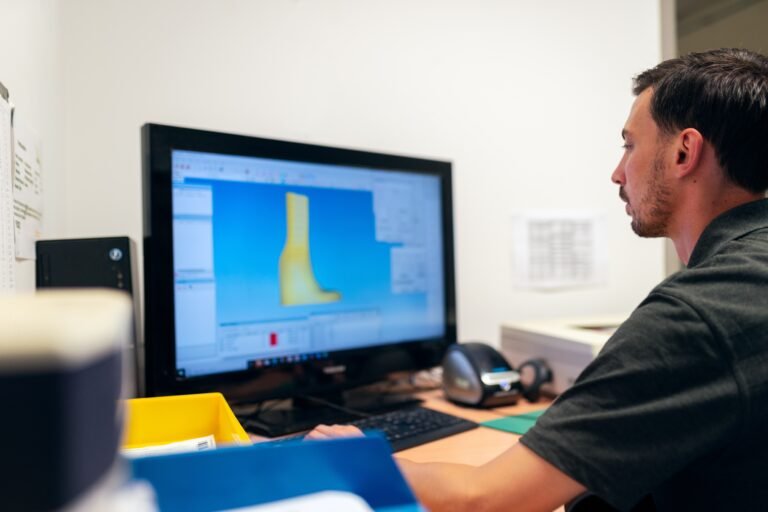
Introduction
In the realm of healthcare, technological advancements have been revolutionizing the landscape, enhancing medical services, and improving patient outcomes.
As we delve into the amalgamation of technology and the health sector, we witness a profound transformation in diagnostics, treatment, patient care, and the overall healthcare ecosystem.
From the digitization of medical records to leveraging Artificial Intelligence (AI) for drug discovery, the integration of technology in the health sector has opened a realm of possibilities for medical professionals and patients alike.
How Technology can help the Health Sector
The health sector has experienced a paradigm shift with the integration of technology. Innovative technologies have streamlined processes, reduced medical errors, enabled early diagnosis, and improved personalized treatment plans.
Through wearable devices and health apps, patients can now actively monitor their health parameters, such as heart rate, blood pressure, and glucose levels. Telemedicine platforms have bridged the gap between doctors and patients, enabling remote consultations and medical advice.
Big Data and AI play pivotal roles in analyzing vast amounts of healthcare data, leading to data-driven insights, predictive analytics, and precision medicine.
Furthermore, the Internet of Things (IoT) has facilitated seamless communication among medical devices, improving the efficiency of medical workflows and patient monitoring.

What is the Health Sector
The health sector, often referred to as the healthcare industry, encompasses a vast array of services and facilities dedicated to improving and maintaining human health.
It includes hospitals, clinics, diagnostic centers, pharmaceutical companies, medical device manufacturers, and healthcare professionals, among others.
The primary goal of the health sector is to promote wellness, prevent diseases, and provide timely and quality healthcare services to individuals of all ages.
Importance of the Health Sector for Economic Growth
Major Contributor to GDP: The health sector is a significant contributor to a country’s gross domestic product (GDP). In the United States, healthcare spending accounted for 17.7% of the GDP in 2020, and it is projected to reach 19.2% by 2028 (Centers for Medicare & Medicaid Services).
A robust health sector boosts economic growth by generating employment opportunities and driving consumer spending on healthcare products and services.
Job Creation: The health sector creates a substantial number of jobs, supporting economic growth and reducing unemployment rates.
In the European Union, the health and social work sector employed over 29 million people in 2020, making it one of the largest employment sectors (Eurostat). A well-functioning health sector not only improves public health but also contributes to economic stability and prosperity.
Productivity and Workforce: A healthy workforce is essential for higher productivity and economic growth. Research shows that for every dollar invested in health, there is a return of up to four dollars in economic productivity (World Health Organization).
By providing access to quality healthcare, the health sector ensures that the workforce remains productive, reducing absenteeism and improving overall economic performance.
Attraction of Foreign Investment: A strong and efficient health sector is a crucial factor for attracting foreign investment. Many multinational companies consider the quality of healthcare services and infrastructure when deciding to invest in a country. Countries with well-developed health sectors often experience increased foreign direct investment, contributing to economic growth and development.
Healthcare Tourism: The health sector can boost economic growth through medical tourism. Countries with advanced healthcare facilities and specialized treatments attract patients from other nations seeking medical services. For example, The Indian medical tourism industry is estimated to be valued at US$ 7,417 Million in 2022 and it is projected to surpass US$ 42,237.47 Million by 2032. Medical tourism not only generates revenue but also creates a positive impact on other sectors such as hospitality and tourism.
Research and Innovation: The health sector fosters research and innovation, driving advancements in medical technologies and pharmaceuticals. These innovations not only improve healthcare outcomes but also have economic benefits. For instance, the global pharmaceutical market was valued at $1.43 trillion in 2020 and is expected to reach $2.01 trillion by 2027 (Grand View Research).
Economic Resilience: A well-functioning health sector enhances a nation’s ability to respond to public health crises and pandemics effectively. The COVID-19 pandemic highlighted the importance of a strong health system in maintaining economic stability.
Countries with robust healthcare infrastructure and pandemic preparedness strategies are more likely to rebound faster from economic downturns.

Unique Challenges of the Health Sector
The health sector faces several unique challenges, including rising healthcare costs, an aging population, infectious diseases, and health disparities among various demographics.
Additionally, the rapid pace of medical advancements presents a challenge in ensuring that healthcare providers stay up-to-date with the latest technologies and treatment modalities.
Moreover, maintaining patient data security and privacy in an increasingly digital world is a constant concern for the health sector.
Technologies Transforming the Health Sector
a. Big Data: The health sector generates massive amounts of data daily. By harnessing Big Data analytics, healthcare organizations can identify patterns, detect disease outbreaks, and optimize resource allocation. According to a report by Market Research Future, the global big data analytics in the healthcare market is projected to reach $68.75 billion by the end of 2023.
b. Artificial Intelligence (AI): AI has revolutionized healthcare by enabling faster and more accurate diagnostics, drug discovery, and treatment plans. AI-powered algorithms can analyze medical images, predict disease progression, and even assist in surgery. According to a report by Allied Market Research, the AI in the healthcare market is expected to reach $45.2 billion by 2026.
c. Cloud Computing: Cloud computing facilitates secure storage and easy access to patient records, reducing administrative burden and enabling seamless collaboration among healthcare providers. The global healthcare cloud computing market is projected to reach $92.2 billion by 2027, as per a report by Grand View Research.
d. Internet of Things (IoT): IoT devices and wearables have transformed patient monitoring and remote healthcare delivery. IoT-enabled medical devices are expected to reach a market value of $72.02 billion by 2026, as stated in a report by Mordor Intelligence.
e. Blockchain: Blockchain technology ensures the security and integrity of medical records and enhances interoperability among healthcare systems. The global blockchain in the healthcare market is predicted to reach $1.636 billion by 2025, according to a report by MarketsandMarkets.
f. Immersive Technologies like AR/VR: AR/VR technologies are transforming medical training, patient education, and surgical planning. The global market for AR and VR in healthcare is projected to reach $11.14 billion by 2025, as per a report by Grand View Research.

Other Specific Technology for the Health Sector
Genomics and precision medicine are emerging as transformative technologies in the health sector. Genomics analyzes an individual’s genetic makeup to tailor personalized treatment plans and medications.
This approach has shown remarkable success in cancer treatment and rare genetic disorders. Precision medicine, in conjunction with genomics, aims to provide targeted therapies based on an individual’s genetic profile, lifestyle, and environmental factors. This approach holds great promise for revolutionizing disease treatment and prevention.
You can read about Digital Therapeutics at
raktimsingh.com/what-is-digital-therapeutics-beginners-guide/
Examples of Companies Leveraging Technology in Healthcare
a. Google’s DeepMind: Google’s DeepMind leverages AI and machine learning to analyze medical data and identify patterns in patient outcomes. Its AI algorithm can predict kidney injuries up to 48 hours before they occur, potentially saving lives and reducing healthcare costs.
b. IBM Watson Health: IBM Watson Health utilizes AI-powered analytics to accelerate drug discovery, optimize clinical trial design, and assist in cancer treatment decision-making.
c. PrognoCIS by Bizmatics: PrognoCIS is a cloud-based Electronic Health Record (EHR) system that streamlines medical workflows, improves patient engagement, and ensures secure data storage.
d. Augmedix: Augmedix utilizes AR technology to provide real-time medical documentation and enhance physician-patient interactions during clinical encounters.
e. PathAI: PathAI employs AI algorithms to analyze pathology slides and assist pathologists in accurate and faster disease diagnosis.

How a Common Man Benefits from Technology in the Health Sector
The integration of technology in the health sector has democratized healthcare access for the common man.
Telemedicine platforms enable remote consultations, saving time and resources for patients in remote areas. Wearable health devices and mobile health apps empower individuals to take charge of their health and wellness through self-monitoring.
Furthermore, AI-powered diagnostics enable early disease detection, improving treatment outcomes and reducing healthcare costs for patients.
Points to Watchouts when Using Technology in the Health Sector
While technology presents immense potential for healthcare, there are crucial watchouts that stakeholders must consider.
Ensuring data privacy and security is paramount to prevent data breaches and unauthorized access to sensitive patient information.
Additionally, healthcare professionals must be adequately trained to use technology effectively and interpret AI-generated insights accurately.
Pitfalls of the Health Industry
The health industry faces challenges related to interoperability of healthcare systems, which hampers seamless exchange of patient data across different providers. Moreover, the implementation of new technologies can be costly, requiring careful financial planning to ensure sustainability.
Furthermore, the rapid pace of technological advancements necessitates regular updates and training for healthcare professionals.
Another major pitfall in the health industry is the potential risk of data breaches and cyberattacks. As the sector increasingly relies on digital platforms for storing and exchanging patient information, the need for robust cybersecurity measures becomes paramount.
A single breach of sensitive medical data can lead to severe consequences, not only compromising patient privacy but also eroding public trust in healthcare providers.
Additionally, the health industry faces challenges related to ethical considerations in the use of certain technologies.
For instance, while AI can greatly enhance diagnostics and treatment planning, there are concerns about bias in algorithms and the potential for AI to replace human medical expertise.
Striking a balance between technological innovation and maintaining the human touch in healthcare is a delicate task that the industry must navigate.
Future Technologies in the Health Sector
Nanomedicine:
Utilizes nanoparticles for targeted drug delivery, reducing side effects and increasing treatment efficacy.
The global nanomedicine market was valued at $151.1 billion in 2020 and is projected to reach $392.8 billion by 2028, with a CAGR of 12.6% (Grand View Research).
Offers personalized and precise therapies for diseases, improving patient outcomes and experiences.
Telehealth Robots:
Enables remote consultations and monitoring, bridging the gap between patients and healthcare providers.
The global telehealth market is expected to reach $559.52 billion by 2027, with a CAGR of 25.2% (Fortune Business Insights).
Provides real-time medical guidance and routine check-ups from a distance, improving healthcare access for underserved areas.
The future of the health sector is promising, with emerging technologies like nanomedicine and telehealth robots poised to make revolutionary impacts on disease treatment and prevention.
Nanomedicine utilizes nanoparticles for targeted drug delivery, reducing side effects and increasing treatment efficacy. The global nanomedicine market was valued at $151.1 billion in 2020 and is projected to reach $392.8 billion by 2028, with a CAGR of 12.6% (Grand View Research).
This innovative approach allows healthcare providers to administer medication directly to affected areas, resulting in more effective treatment outcomes and improved patient experiences.
Telehealth robots enable remote consultations and monitoring, bridging the gap between patients and healthcare providers, especially for those in remote or underserved areas. The global telehealth market is expected to reach $559.52 billion by 2027, with a CAGR of 25.2% (Fortune Business Insights).
By utilizing telehealth robots, medical professionals can conduct virtual visits, offer real-time medical guidance, and even perform routine check-ups from a distance. This technology enhances healthcare access, particularly for vulnerable populations, and has the potential to transform the way we deliver medical care in the future.
You can read about Brain Computer Interface at
raktimsingh.com/what-is-brain-computer-interface-with-examples/

Conclusion
The amalgamation of technology and the health sector has ushered in a new era of healthcare, where precision, efficiency, and patient-centricity reign supreme.
From AI-powered diagnostics to wearable health devices, technology has not only improved patient care but also paved the way for advanced treatment modalities and personalized medicine.
As we embrace future technologies, the health sector is poised to achieve greater milestones in disease management, prevention, and overall population health, heralding a brighter and healthier future for all.

